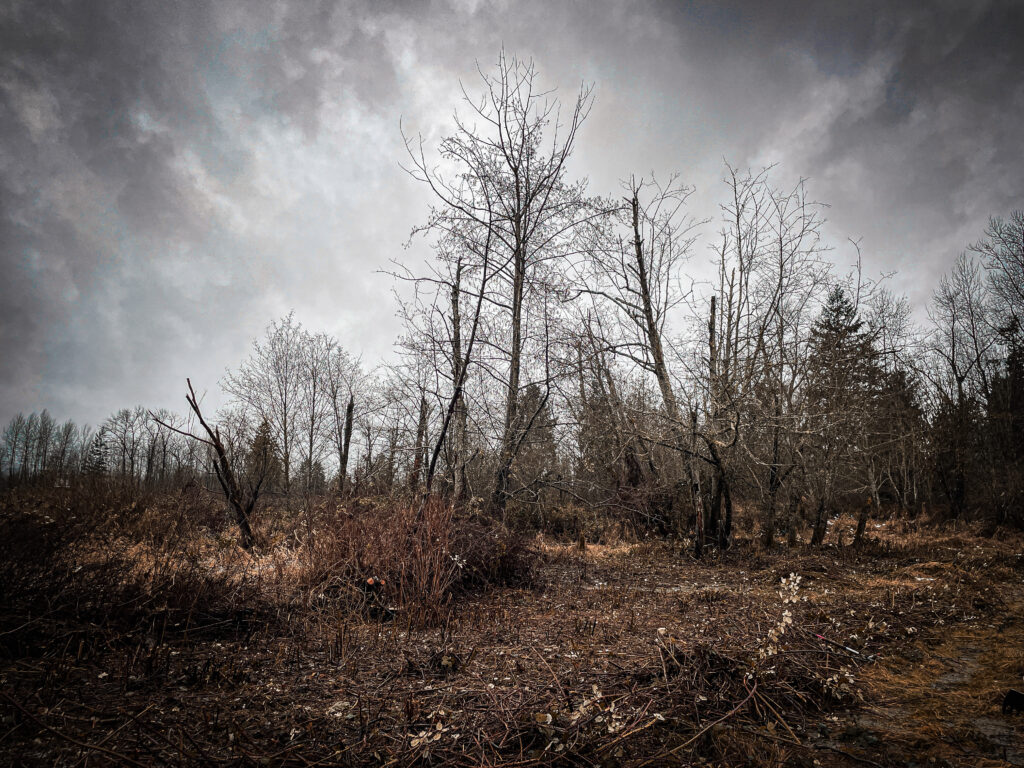Orca Health Starts at Your Streamside Property
by Brianna Bjolstad, Snohomish Conservation District
Our Southern Resident orcas survive primarily on one food source: Chinook salmon. When we think about protecting the health of orcas, one of the most important factors is keeping this food source plentiful for them. Unfortunately, Chinook populations have diminished greatly since the 20th century, leaving Southern Resident orcas searching for food. One of the many factors for the decrease in salmon populations is deteriorating water quality in rivers and streams around Puget Sound. Conservation districts work to protect Southern Residents by restoring riparian landscapes to improve salmon habitat.
Riparian buffers are areas along the sides of streams or other waterways that are planted with native vegetation. The added trees and shrubs provide shade to cool down the stream. Colder water can hold more dissolved oxygen, providing better conditions for fish to survive. These cooler areas of the stream also provide a place fish can retreat to on warm days and act as a cold water input into other areas of the stream, keeping the whole system cooler.

The trees and shrubs in a riparian buffer help filter out pollutants carried by stormwater runoff, such as fertilizer and livestock waste. Keeping these contaminants out of streams can contribute to better pH levels for salmon survival. It also helps prevent excess nutrient levels in our streams, lakes, and Puget Sound.
Algal blooms can occur when there are too many nutrients such as nitrogen or phosphorus in the water. When the algae die and decompose, they pull the oxygen from the water and can cause dangerously low levels of dissolved oxygen for fish and other aquatic life. Some algae also release toxins that are harmful to humans and animals. In addition, riparian buffers help to absorb 6ppd-quinone, a chemical found in car tires that is lethal to Chinook salmon.
Another key benefit of buffers is decreased soil erosion. Tree roots help hold streambanks in place, decreasing the amount of sediment that ends up in the water. Sediment can damage fish gills and make it more difficult for fish to find food. Additionally, if there is too much sediment in the water, it can suffocate fish eggs and bury spawning areas.
While improving water quality and habitat in a stream does not guarantee that salmon will return, it makes a big difference in increasing the chances that they will—and in increasing the potential food supply for Southern Resident orcas.
Snohomish Conservation District has contributed to this effort through a project on an unnamed tributary of French Creek. The stream at the site had unfavorable temperature, dissolved oxygen, pH, and bacteria levels at the start of the project. The District’s Habitat Restoration team is working to mitigate these issues by removing invasive Himalayan blackberry and other non-native invasive plants and replacing them with native tree and shrub species. As these trees grow and form a canopy cover, they will provide the needed shade to the stream which in turn will improve temperature and dissolved oxygen levels in the water.

It will also have the added benefit of providing shade to the understory. This prevents the growth of invasives and leaves room for shade-tolerant ground cover to grow. The result is a more biodiverse landscape with increased capacity for filtering stormwater pollution.
Snohomish Conservation District also installed a fence on the property to ensure that livestock will not be able to access the stream. This will help prevent erosion and keep manure further away, reducing the potential for runoff to carry nutrients, sediment, and bacteria into the stream.
When you think about your local streams, orcas may not be the first thing that comes to mind. However, through the food web connection between salmon and Southern Resident orcas, the health of our streams and rivers play an important role in keeping these creatures healthy. You have the power to influence the health of orcas through streamside restoration on your property. To learn more about how you can improve water quality on your property or in your community, reach out to your local conservation district.
This project has been funded wholly or in part by the Washington State Department of Ecology. The contents of this document do not necessarily reflect the views and policies of the Washington State Department of Ecology, nor does the mention of trade names or commercial products constitute endorsement or recommendation for use.
